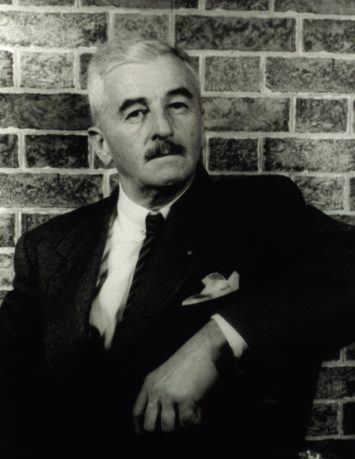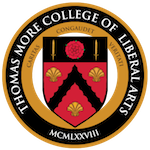William Faulkner

William Faulkner (1897–1962) was a Nobel Prize–winning novelist of the American South who wrote challenging prose and created the fictional Yoknapatawpha County. He is best known for such novels as ‘The Sound and the Fury’ and ‘As I Lay Dying.’
Synopsis
American writer William Faulkner was born in New Albany, Mississippi, in 1897. Much of his early work was poetry, but he became famous for his novels set in the American South, frequently in his fabricated Yoknapatawpha County, with works that included The Sound and the Fury, As I Lay Dying and Absalom, Absalom! His controversial 1931 novel Sanctuary was turned into two films, 1933’s The Story of Temple Drake as well as a later 1961 project. Faulkner was awarded the 1949 Nobel Prize in Literature and ultimately won two Pulitzers and two National Book Awards as well. He died on July 6, 1962.
Younger Years
A Southern writer through and through, William Cuthbert Falkner (the original spelling of his last name) was born in the small town of New Albany, Mississippi, on September 25, 1897. His parents, Murry Falkner and Maud Butler Faulkner, named him after his paternal great-grandfather, William Clark Falkner, an adventurous and shrewd man who seven years prior was shot dead in the town square of Ripley, Mississippi. Throughout his life, William Clark Falkner worked as a railroad financier, politician, soldier, farmer, businessman, lawyer and—in his twilight years—best-selling author (The White Rose of Memphis).
The grandeur of the “Old Colonel,” as almost everyone called him, loomed large in the minds of William Clark Falkner’s children and grandchildren. The Old Colonel’s son, John Wesley Thompson, opened the First National Bank of Oxford in 1910. Instead of later bequeathing the railroad business to his son, Murry, however, Thompson sold it. Murry worked as the business manager for the University of Mississippi. Murry’s son, author William Falkner, held tightly to his great-grandfather’s legacy, writing about him in his earliest novels set in the American South.
As much as the older men in Faulkner’s family made an impression on him, so did the women. Faulkner’s mother, Maud, and grandmother Lelia Butler were voracious readers, as well as fine painters and photographers, and they taught him the beauty of line and color. Faulkner’s “mammy,” as he called her, was a black woman named Caroline Barr. She raised him from birth until the day he left home and was fundamental to his development. At her wake, Faulkner told the mourning crowd that it was a privilege to see her out, that she had taught him right from wrong and was loyal to his family despite having borne none of them. In later documents, Faulkner points to Barr as the impetus for his fascination with the politics of sexuality and race.
As a teenager, Faulkner was taken by drawing. He also greatly enjoyed reading and writing poetry. In fact, by the age of 12, he began intentionally mimicking Scottish romantics, specifically Robert Burns, and English romantics, A. E. Housman and A. C. Swinburne. However, despite his remarkable intelligence, or perhaps because of it, school bored him and he never earned a high school diploma. After dropping out, Faulkner worked in carpentry and sporadically as a clerk at his grandfather’s bank.
During this time, Faulkner met Estelle Oldham. At the time of their meeting, she was both popular and exceedingly effervescent and immediately stole his heart. The two dated for a while, but another man, named Cornell Franklin, proposed to her before Faulker did. Estelle took the proposal lightheartedly, partly because Franklin had just been commissioned as a major in the Hawaiian Territorial Forces and was leaving soon to report for duty. Estelle hoped it would dissolve naturally, but several months later, he mailed her an engagement ring. Estelle’s parents bade her to accept the offer, as Franklin was a law graduate of the University of Mississippi and came from a family of high repute.
Afflicted by Estelle’s engagement, Faulkner turned to new mentor Phil Stone, a local attorney who was impressed by his poetry. Stone invited Faulkner to move and live with him in New Haven, Connecticut. There, Stone nurtured Faulkner’s passion for writing. While delving into prose, Faulkner worked at the Winchester Repeating Arms Company, a distinguished rifle manufacturer. Lured by the war in Europe, he joined the British Royal Flying Corps in 1918 and trained as a pilot in the first Royal Canadian Air Force. He had earlier tried to enlist in the U.S. Forces, but was rejected due to his height (he was slightly under 5′ 6″). To enlist in the Royal Air Force, he lied about several facts, changing his birthplace and surname—from Falkner to Faulkner—to appear more British.
Faulkner trained on British and Canadian bases, and finished his time in Toronto just before the war ended, never finding himself in harm’s way. A man of skilled exaggeration, Faulkner embellished his experiences and sometimes completely fabricated war stories for his friends back home. He even donned the uniform of a lieutenant to bolster his reputation and wore it when he returned to Mississippi.
Early Writings
By 1919, Faulkner had enrolled at the University of Mississippi. He wrote for the student newspaper, the Mississippian, submitting his first published poem and other short works. However, after three semesters as an entirely inattentive student, he dropped out. He worked briefly in New York City as a bookseller’s assistant and for two years as the postmaster for the university, and spent a short stint as the scoutmaster for a local troop.
In 1924, Phil Stone escorted a collection of Faulkner’s poetry, The Marble Faun, to a publisher. Shortly after its 1,000-copy run, Faulkner moved to New Orleans. While there, he published several essays for The Double Dealer, a local magazine that served to unite and nurture the city’s literary crowd. In 1926, Faulkner succeeded in having his first novel published, Soldiers’ Pay. As soon as it had been accepted for print in 1925, he sailed from New Orleans to Europe to live for a few months at Le Grand Hôtel des Principautés Unies in Paris. During his stay, he wrote about the Luxembourg Gardens that were a short walk from his apartment.
Back in Louisiana, American writer Sherwood Anderson, who had become a friend, gave Faulkner some advice: He told the young author to write about his native region of Mississippi—a place that Faulkner surely knew better than northern France. Inspired by the concept, Faulkner began writing about the places and people of his childhood, developing a great many colorful characters based on real people he had grown up with or heard about, including his great-grandfather, William Clark Falkner. For his famous 1929 novel, The Sound and the Fury, he developed the fictional Yoknapatawpha County—a place nearly identical to Lafayette County, in which Oxford, Mississippi, is located. A year later, in 1930, Faulkner released As I Lay Dying.
Famed Author
Faulkner became known for his faithful and accurate dictation of Southern speech. He also boldly illuminated social issues that many American writers left in the dark, including slavery, the “good old boys” club and Southern aristocracy. In 1931, after much deliberation, Faulkner decided to publish Sanctuary, a story that focused on the rape and kidnapping of a young woman at Ole Miss. It shocked and appalled some readers, but it was a commercial success and a critical breakthrough for his career. Years later, in 1950, he published a sequel that was a mix of conventional prose and play forms, Requiem for a Nun.
Personally, Faulkner experienced both elation and soul-shocking sadness during this time in his career. Between the publishing of The Sound and the Fury and Sanctuary, his old flame, Estelle Oldham, divorced Cornell Franklin. Still deeply in love with her, Faulkner promptly made his feelings known, and the two were married within six months. Estelle became pregnant, and in January of 1931, she gave birth to a daughter, whom they named Alabama. Tragically, the premature baby lived for just over a week. Faulkner’s collection of short stories, titled These 13, is dedicated to “Estelle and Alabama.”
Faulkner’s next novel, Light in August (1932), tells the story of Yoknapatawpha County outcasts. In it, he introduces his readers to Joe Christmas, a man of uncertain racial makeup; Joanna Burden, a woman who supports voting rights for blacks and later is brutally murdered; Lena Grove, an alert and determined young woman in search of her baby’s father; and Rev. Gail Hightower, a man besieged by visions. Time magazine listed it—along with The Sound and the Fury—as one of the 100 best English-language novels from 1923 to 2005.
Screenwriting
After publishing several notable books, Faulkner turned to screenwriting. Starting with a six-week contract at Metro-Goldwyn-Mayer, he cowrote 1933’s Today We Live, starring Joan Crawford and Gary Cooper. After Faulkner’s father died, and in need of money, he decided to sell the rights to film Sanctuary, later titled The Story of Temple Drake (1933). That same year, Estelle gave birth to Jill, the couple’s only surviving child. Between 1932 and 1945, Faulkner traveled to Hollywood a dozen times to toil as a scriptwriter and contributed to or wrote countless films. Uninspired by the task, however, he did it purely for financial gain.
During this period, Faulkner also published several novels, including the epic family saga Absalom, Absalom! (1936), the satirical The Hamlet (1940) and Go Down, Moses (1942).
Wins Nobel Prize
In 1946, Malcolm Cowley published The Portable Faulkner and interest in Faulkner’s work was revived. Two years later, Faulkner published Intruder in the Dust, the tale of a black man falsely accused of murder. He was able to sell the film rights to MGM for $50,000.
One of Faulkner’s greatest professional moments came when he was awarded the 1949 Nobel Prize in Literature, receiving the award the following year. The committee deemed him one of the most important writers of American letters. This attention brought him more awards, including the National Book Award for Fiction for Collected Stories and the Legion of Honor in New Orleans. He also won the 1951 National Book Award for The Collected Stories of William Faulkner. A few years later, Faulkner was awarded the 1955 Pulitzer Prize in Fiction along with another National Book Award for his novel A Fable, set in France during WWI.
Death
In January 1961, Faulkner willed all his major manuscripts and many of his personal papers to the William Faulkner Foundation at the University of Virginia. On July 6, 1962, coincidentally the same date as the Old Colonel’s birthday, William Faulkner died of a heart attack. He was posthumously awarded his second Pulitzer in 1963 for The Reivers.
Faulkner created an impressive literary legacy and remains a revered writer of the rural American South, having expertly captured the immense complexities of both the region’s beauty and its dark past.
Citation:
William Faulkner. (2017, April 28). Retrieved January 7, 2019, from https://www.biography.com/people/william-faulkner-9292252

